Estimated reading time: 7 minutes
Have you ever wondered how to grow your own dwarf rootstock fruit trees?
Dwarf fruit trees are a great solution for lots of people. They’ll suit you well if you have limited space, don’t want to climb a ladder, or want the fruit to grow where you can reach it.
We talk here about how to graft your own fruit trees. But if you want to end up with a dwarf tree, the first job is to grow a dwarfing rootstock.
What exactly is a rootstock?
You probably know that most fruit trees are grafted. That means the underground parts of the tree are a different variety from the top, which is also called the variety, scion, or cultivar.
The tree that forms the roots of your tree is called a rootstock. Sometimes they are grown from seed, and in this case, they’re called a seedling, which will grow into a full-size tree.
Other rootstocks have been bred for particular characteristics, one of the most important ones being the size of the tree. Rootstocks might also be chosen because they’re vigorous, disease-resistant, or drought-resistant, for example.
That means that if you want to grow a dwarf rootstock, you can’t grow it from seed.
So, how do you do it?
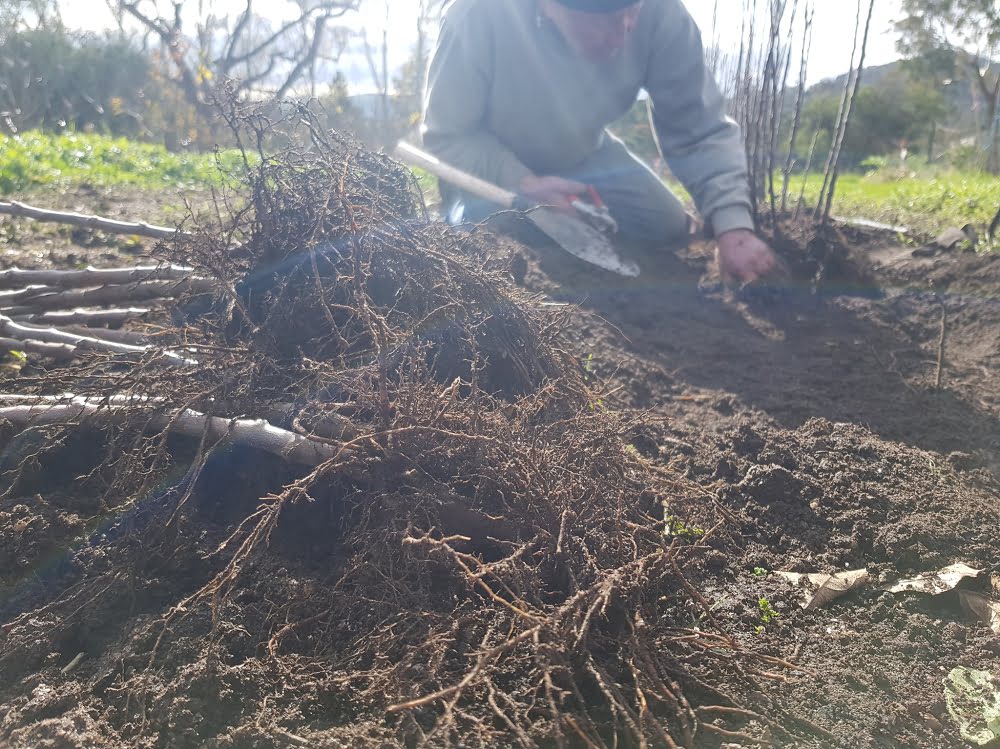
Can you grow rootstock?
Back in August 2018, we started growing our own rootstock trees for Carr’s Organic Fruit Tree Nursery (our on-farm nursery).
We use a technique called a stool bed. This is a clever way of taking a single dwarf rootstock tree and turning it into many trees. The best bit is you can do it year after year without needing to buy more stocks.
It was a new technique for us, so it was a bit experimental at the beginning.
What is the smallest rootstock?
Rootstocks are available in a huge range of sizes, particularly when it comes to apples. The smallest one available is called M27, which only grows to about 2m tall or a bit less.
Other fruit trees also have many rootstocks available in a range of sizes producing trees that range from 50% to 90% of a full-sized tree.
The smallest rootstock for each fruit type is:
- Quince C – quinces and pears;
- Pixy – plums and apricots;
- St Julian A – stone fruit;
- Controller 5 – peaches and nectarines;
- Gisela 5 – cherries.
For our apple stoolbed, we chose a variety called MM102, which grows to just over 50% the height of a full-size tree. It’s not too big and not too small – perfect for most people looking for a dwarf tree.
Getting started with your stoolbed
First, we had to buy the original 10 rootstocks from a specialised rootstock nursery. If you’re doing this at home you probably won’t need 10 trees to get started. In fact, one tree is ample, but you’ll still need to source it somewhere.
Look for a rootstock nursery in your state that will sell you a single tree (some nurseries will mail trees to you).
Don’t worry if you can’t find a rootstock to buy, because we’re about to share a very clever (and free) alternative.
If you know of an existing dwarf tree in the type you’re looking for, all you need to do is take a root cutting to grow the first tree.
It’s easy to do this without causing any harm to the tree. Just dig a small hole under the tree until you find some roots, remove a piece, cut it into 10cm lengths, and pot with good quality potting mix with the cut edge just under the surface. Keep it well watered.
How to create a rootstock
Once you have your rootstock tree, dig a trench that’s long enough to lay it down flat. The trench needs to be about 20cm deep.
Plant the tree at an acute angle at one end of the trench. The roots need to be buried, but you also need to be able to lay the tree flat in the trench.
Now gently peg the tree down so it’s lying flat along the bottom of the trench. If you can’t get it completely flat at the beginning, try again after a week or so.
During spring, shoots should start growing up from the horizontal surface of the tree at the bottom of the trench. Gradually surround the shoots with soil as they grow.
First, you’ll fill the trench, and then continue to mound the soil above ground level as the shoots grow taller.
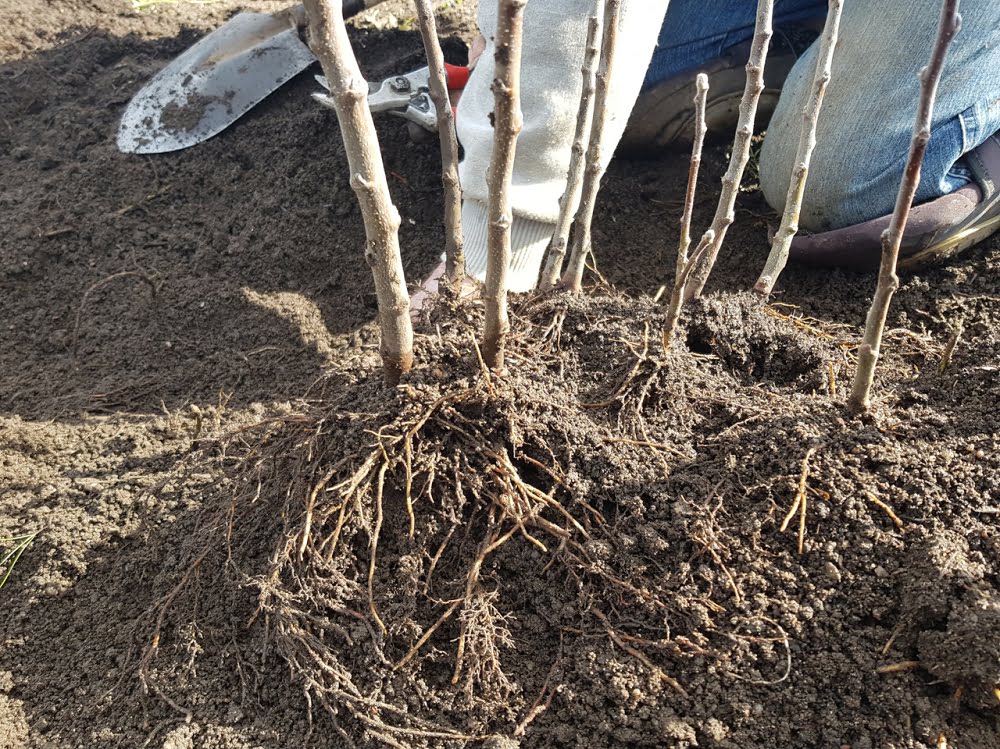
How many trees will grow from your stoolbed?
In our first experiment, we harvested more than 60 trees from the initial 10 we layered into the stoolbed trench.
As expected, that number went up for the first couple of years as the trees at the bottom of the trench became more established.
However, our early results were a bit mixed.
We also grow cherry rootstocks using the stoolbed technique. Cherries are notoriously hard to grow from both seed or cutting, so stoolbeds are the traditional way of growing them.
However, they are much more fickle than apples!
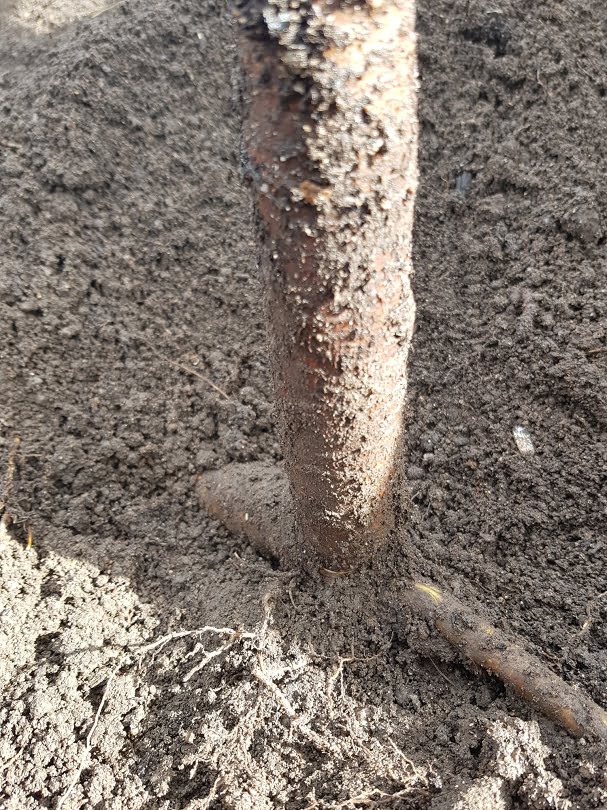
Potential problems with a cherry stoolbed
The first year we grew cherries in a stoolbed we started with 20 cherry Mazzard rootstock trees. Just like the apples, we harvested more than 60 trees. However, they were much less successful, particularly in the root department.
Cherry root development is much slower, which means you’re more likely to get mixed results.
Some trees that you harvest should have enough roots and grow well, but there’s a higher risk of growing trees with only a couple of roots, and possibly none at all!
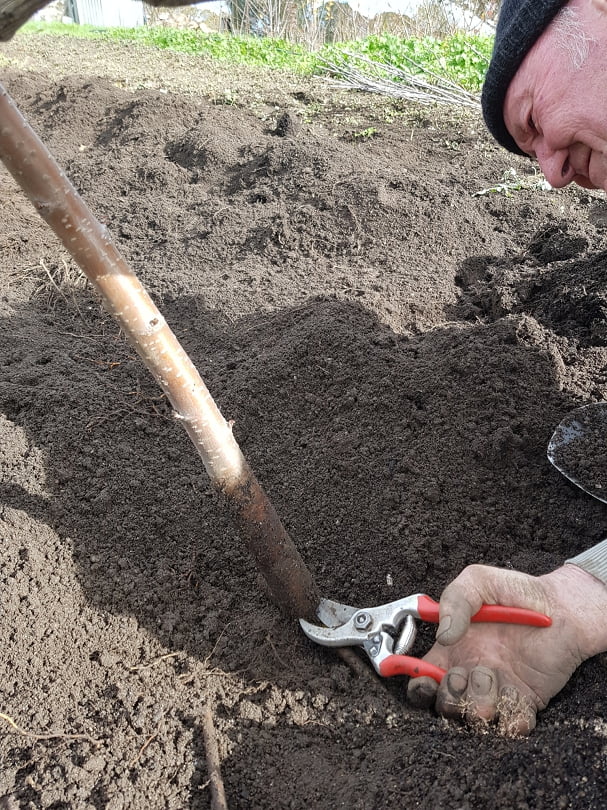
Another problem with cherry stoolbeds is a tendency for the rootstock trees to grow over-large. These are the trees which tend to have fewer roots, suggesting they’re putting all their energy into growing above the soil rather than forming roots below the soil.
It also makes harvesting them extremely difficult. It’s important to cut them off as close to the parent tree as possible, so it may test your secateur expertise!
Related Articles
Animals, fruit trees, and electric fences
Animals and fruit trees go well together if you can figure out how to enjoy the benefits without the animals doing too much damage.
Warming winter cakes with home-grown fruit
Bake delicious warming winter cakes from the fruit you’ve grown on the fruit trees in your own garden for extra satisfaction.
How to grow your own multigraft or fruit salad tree
Multigraft trees are a no-brainer for many gardens, as they reduce risk and provide a bigger variety of fruit, without taking up more space.

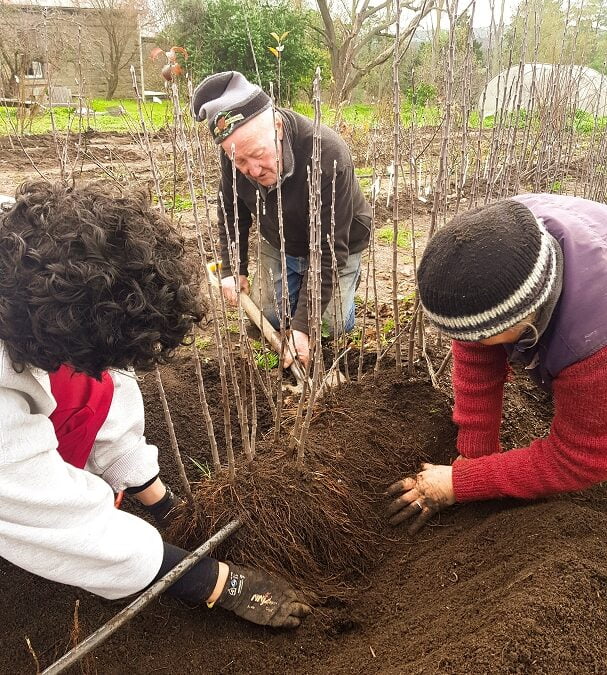

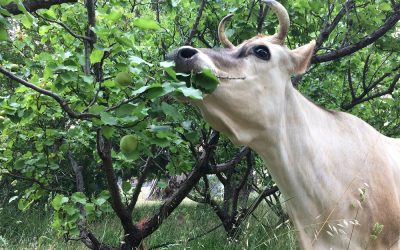
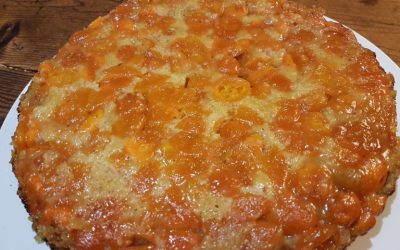



Interesting technique….when laying the root down, do you need to cover it entirely with soil, or should the tip, with a leaf, poke through to enable photosynthesis?
Thanks, Terry Roberts
The original tree is laid down in winter Terry, before it has leaves on it. In spring, the shoots start growing straight up, and as they grow we gradually cover them with soil, always leaving some leaves exposed at the top.
Hi, just curious as to how you harvest the stock? Do you cut the original trunk into segments as you remove the stock or can you prune the root stock off and leave the sideways tree to produce more?
Your second guess was the right one Ian – the point of a stoolbed is that it stays there year after year. We pull all the soil away, then cut the rootstock from the original layered tree, which remains in the ground to grow a new crop of shoots the following year.
Hi, I’m wondering that if I create a stoolbed in the early Spring when the ground thaws, will I be able to harvest new rootstocks by the end of Fall? Or does the initial rootstock need a winter to settle into its new location?
Wow I try to research propagating rootstock and the information is very limited. This was very helpful! I have a few rootstock from last year I’d like to try and stool to raise my own. When laying the rootstock down should I prune off any branch that comes in contact with the ground to make it easier to lay flat? The new shoots that turn into the rootstock come from the buds? Any information is helpful. Do you cover the rootstock with dirt when laying it down or not until the new growth starts to grow! TYIA
“Dig a small hole under the tree until you find some roots, remove a piece, cut it into 10cm lengths, and pot with good quality potting mix with the cut edge just under the surface” Is the entire root segment buried 20 cm in a trench? Or should it be angled in the trench, so the cut edge of the root is just barely below the surface? And why? Diagrams would be helpful. Thanks.